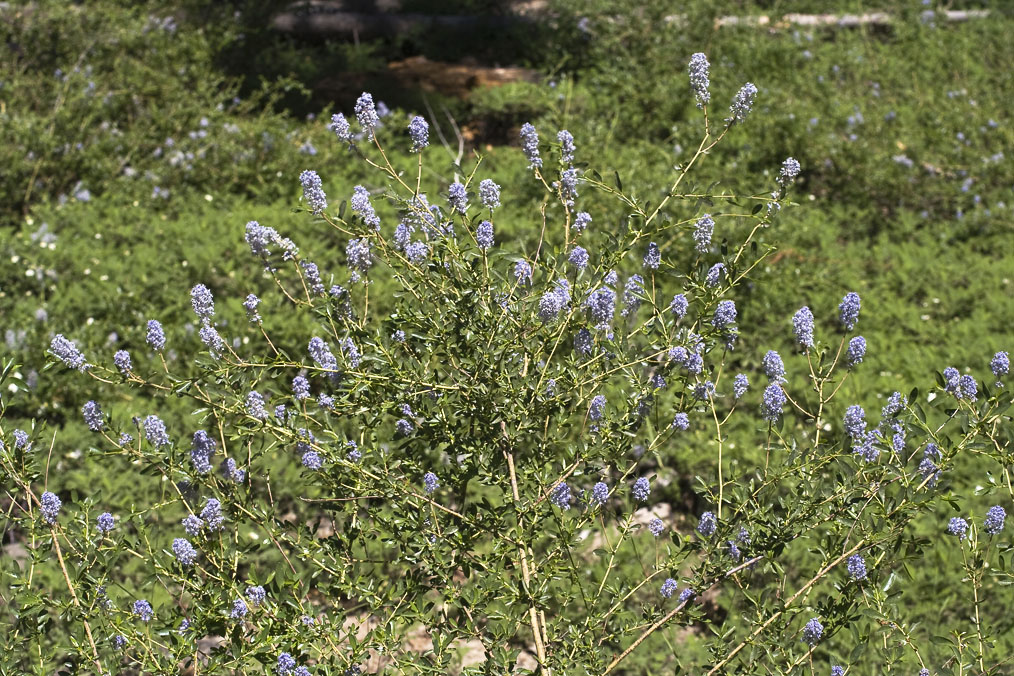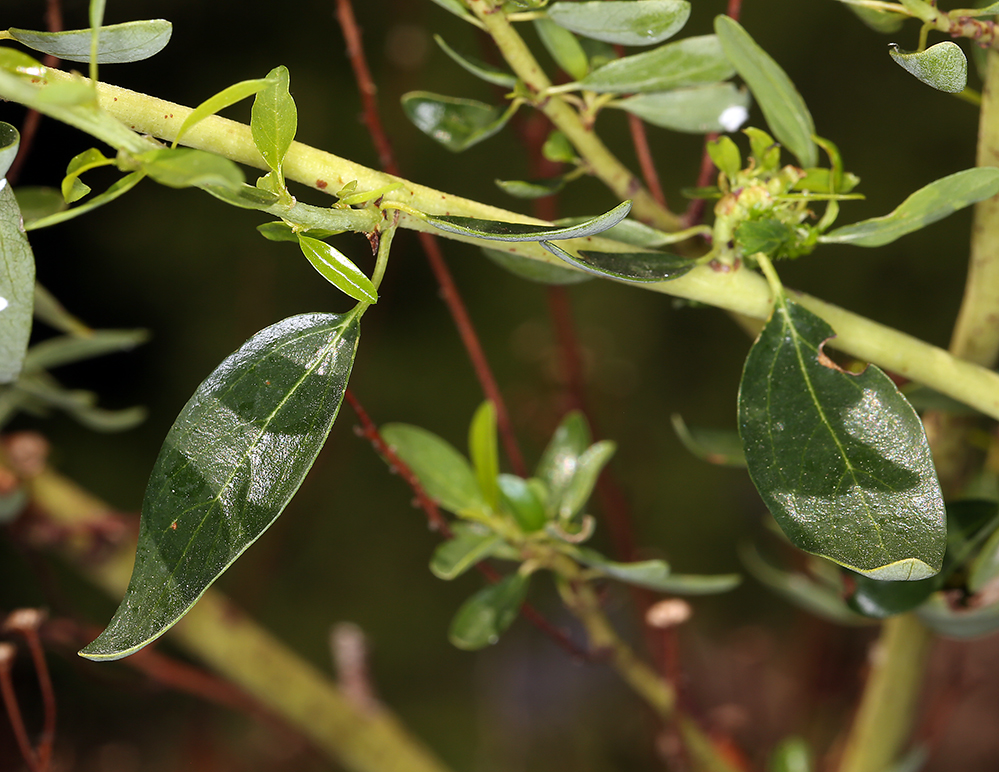Taxonomy: Kingdom - Plantae (plants). Subkingdom - Tracheobionta (vascular plants). Superdivision - Spermatophyta (seed plants). Division - Magnoliophyta (flowering plants). Class - Magnoliopsida (dicotyledons). Subclass - Rosidae. Order - Rhamnales. Family - Rhamnaceae (buckthorn). Genus - Ceanothus L. Species - Ceanothus parvifolius (S. Watson) Trel.
Ecology: Ceanothus parvifolius has a limited growing area only located in California. Often foing in Jefferey and Ponderosa pine forests this species is drought and shde tolerant. Ceanothus parvifoius is also a nitrogen-fixing shrub that increases with disturbance. This species can grow in open to midslope locations ranging 1060 - 2800 meters in elevation.


